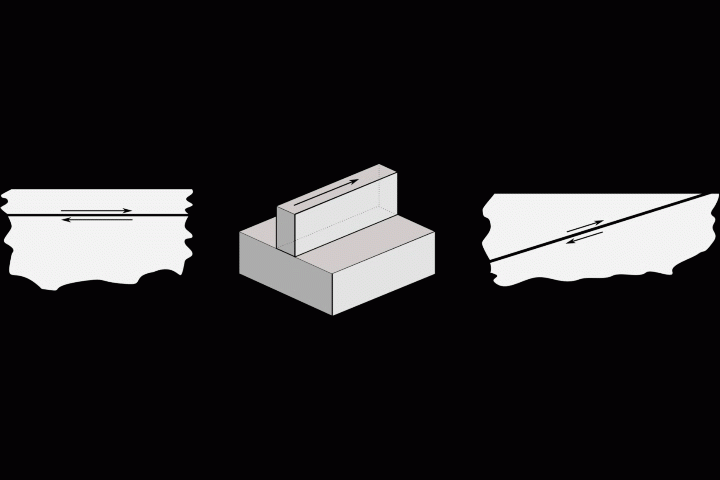Are you a journalist? Please sign up here for our press releases
Subscribe to our monthly newsletter:

Friction has been a subject of scientific inquiry at least since the pioneering experiments of Leonardo da Vinci. More than 500 years later, researchers are still refining our understanding of this everyday physical phenomenon, which is present in everything from our footsteps, to mechanics, to the movements of tectonic plates.
Friction, says Prof. Eran Bouchbinder of the Weizmann Institute of Science’s Chemical Physics Department, can be expressed as the ratio between two types of forces: those that hold two bodies together – for example, gravity or externally applied pressure – and those that promote sliding – for example, leg movements, mechanical drives or mantle flows beneath the Earth’s crust. Friction occurs at the interface where two bodies come into contact, and this has been studied extensively. But the friction between two bodies depends on more than the interface; the individual properties of the bodies are also crucial to understanding this phenomenon. In particular, it was recently shown that if the sliding bodies are made of two different materials, the frictional resistance between them is reduced – that is, friction becomes effectively weaker.

But this essential weakening effect was assumed to disappear when the sliding bodies were made of the same material. Research students Michael Aldam and Dr. Yohai Bar-Sinai, who is currently a postdoctoral fellow at Harvard University, together with Bouchbinder and Prof. Efim Brener of Forschungszentrum Jülich, Germany, developed a new theory which shows that in fact this assumption is not valid. The new theory undermines another conventional assumption in frictional research, one which states that friction is independent of the geometry – i.e. shape and size – of the sliding bodies. The group showed that when the sliding bodies are made of the same material but have different geometries, weakening effects comparable to those seen between dissimilar materials emerge. This was an unexpected result, and it demonstrates that the size and shape of the two bodies that slide against one another can affect the friction between them – contrary to the conventional wisdom that dates back to Leonardo da Vinci.
The new theory was put to the test with experiments conducted in the lab of Prof. Jay Fineberg of the Hebrew University of Jerusalem, a long-term collaborator of Bouchbinder’s. Fineberg, together with research student Ilya Svetlizky, performed well-controlled friction experiments with high resolution that probed the dynamics of the sliding interface. They discovered that when a thinner body was sliding on top of a thicker one, friction was weaker than predicted in the conventional theory and in agreement with the new theory. Furthermore, the weakening effect disappeared altogether when the experiments were repeated with bodies of the same thickness, lending strong support to the new theory.

These findings, says Bouchbinder, provide additional evidence for the idea that the “bulk”of the bodies, and not just the interface between them, contributes to the overall frictional response. The theory adds a new dimension to the basic understanding of how friction works, and will require researchers and engineers who deal with friction to take into account the geometry of the sliding bodies. This new concept may influence the design of engineering systems and the understanding of natural ones.
“Our research could be especially relevant to earthquake research – for example, earthquakes that occur in subduction zones – regions of the Earth where one tectonic plate is pressed underneath another. This configuration features geometric asymmetry and hence our work might be relevant,” says Aldam. “Our findings might also be relevant to landslides, where a relatively thin layer of ground slides on top of a much deeper one.”